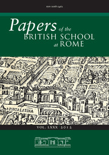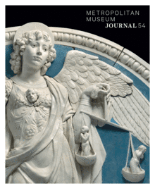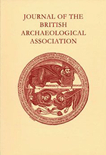
STUDI PIEMONTESI
Scope & Guideline
Connecting Past and Present: Insights from Piedmont Studies
Introduction
Aims and Scopes
- Cultural Heritage and Artistic Studies:
The journal frequently publishes articles that explore the artistic movements, significant artworks, and cultural heritage of Piedmont, highlighting the contributions of local artists and the historical context of their works. - Historical Research on Piedmont:
A significant portion of the journal is dedicated to historical analyses, covering events from the Risorgimento to contemporary times, providing insights into political, social, and economic developments in the region. - Literary Studies and Linguistic Analysis:
The journal features studies that delve into the literary contributions of Piedmontese authors, as well as examinations of the Piedmontese dialect and its evolution, reflecting the region's linguistic diversity. - Interdisciplinary Approaches:
By integrating perspectives from sociology, anthropology, and art criticism, 'STUDI PIEMONTESI' promotes interdisciplinary research that enriches the understanding of Piedmont's cultural dynamics. - Local History and Community Narratives:
The journal emphasizes the importance of local history and community narratives, presenting research that uncovers lesser-known aspects of Piedmont's past and celebrates local identities.
Trending and Emerging
- Contemporary Art and Culture:
There is an increasing focus on contemporary art and cultural movements within Piedmont, as seen in articles exploring modern artistic expressions and their societal impacts, reflecting a broader interest in current cultural dynamics. - Sustainability and Environmental Studies:
Emerging themes around sustainability and environmental studies are becoming prominent, with research addressing the impact of climate change and conservation efforts in the Piedmont region. - Migration and Transnational Narratives:
The journal has seen a rise in publications addressing migration, exploring the experiences of Piedmontese migrants and the influence of transnational connections on local culture and identity. - Digital Humanities and Technology in Cultural Studies:
The integration of digital tools and methodologies in cultural studies is gaining traction, with new research exploring how technology can enhance the understanding of Piedmont's cultural heritage. - Social Justice and Gender Studies:
There is a growing emphasis on social justice and gender studies, focusing on the roles and contributions of women in Piedmontese history and contemporary society, reflecting a broader societal shift towards inclusivity and equality.
Declining or Waning
- Traditional Folklore and Myths:
While folklore and myths of Piedmont were once a focal point in earlier publications, there has been a noticeable decrease in research articles dedicated to these themes, possibly due to a growing interest in contemporary cultural issues. - Military History:
Themes related to military history, particularly those focusing on specific battles and military figures from the past, have become less frequent, indicating a shift towards broader social and cultural analyses. - Economic History of Piedmont:
Studies focused exclusively on the economic history of the region, particularly those examining industrial development in the 19th and early 20th centuries, have seen a decline, as the journal increasingly prioritizes cultural and artistic narratives. - Architectural Studies of Historical Buildings:
Research dedicated to architectural studies of historical buildings, while still relevant, appears to be less prevalent, as the journal diversifies its content towards more contemporary cultural themes. - Studies on Agricultural Practices:
There has been a noticeable reduction in articles focusing on traditional agricultural practices and their historical significance, suggesting a waning interest in rural studies within the broader context of Piedmontese research.
Similar Journals

South African Journal of Cultural History
Connecting Past and Present Through Cultural NarrativesSouth African Journal of Cultural History is a leading forum dedicated to the exploration and analysis of cultural history within the diverse context of South Africa. Published by the SOUTH AFRICAN SOCIETY FOR CULTURAL HISTORY, this journal serves as an essential resource for researchers, professionals, and students interested in understanding the intricate past that shapes contemporary societies. With an emphasis on interdisciplinary studies, it encourages contributions that delve into various aspects of cultural heritage, identity, and social dynamics. While currently not an open-access publication, the journal aims to provide insightful articles that foster academic discourse and promote the preservation and appreciation of South Africa's rich cultural history. By engaging with this journal, scholars can connect with a vibrant community committed to advancing knowledge in cultural history and enhancing the visibility of South African cultural narratives on a global scale.

Radovi-Zavoda za Hrvatsku Povijest
Innovative Insights into Croatia's Historical NarrativeRadovi-Zavoda za Hrvatsku Povijest, published by the Institute of Croatian History within the Faculty of Humanities and Social Sciences, is a distinguished open-access journal dedicated to advancing scholarly discourse in the field of history, with a specific focus on Croatian heritage and historiography. Established in 1971, this journal has evolved to become a vital resource for researchers, professionals, and students alike, showcasing innovative research and critical perspectives on historical developments in Croatia and the broader region. With an ISSN of 0353-295X and a recent Scopus ranking placing it in the Q3 quartile for 2023, it stands as a testament to the rich historiographical contributions emerging from Croatia. By providing immediate open access to its content, Radovi-Zavoda za Hrvatsku Povijest seeks to enhance the visibility and impact of historical research, facilitating knowledge exchange and academic collaboration. The journal's commitment to excellence is reflected in its rigorous peer-review process, ensuring that all published works meet high academic standards. As the journal continues to converge from 2013 to 2023, it solidifies its role as a key player in the global historical narrative.

Papers of the British School at Rome
Fostering Scholarly Dialogue in Visual Arts and BeyondPapers of the British School at Rome, published by Cambridge University Press, is a prestigious journal that has been contributing to the fields of archaeology, history, and visual arts since its inception in 1902. With an ISSN of 0068-2462 and an E-ISSN of 2045-239X, this journal serves as an essential platform for innovative research and scholarly dialogue that explores the rich cultural heritage of Rome and its surrounding areas. The journal is ranked in the top quartiles for various categories, including Q1 in Visual Arts and Performing Arts, reflecting its significant impact and relevance in these fields. Despite its non-open access status, the journal boasts a robust readership, comprising researchers, professionals, and students eager to delve into the scholarly discussions it fosters. The Scopus rankings further affirm its reputation, with high percentiles in key areas, marking it as a vital resource for anyone invested in the academic study of classical and contemporary Roman culture. The journal's objective is to promote interdisciplinary research, making it a cornerstone for advancements in art history and archaeological studies.

TRANSACTIONS OF THE ANCIENT MONUMENTS SOCIETY
Preserving the Past, Inspiring the FutureTRANSACTIONS OF THE ANCIENT MONUMENTS SOCIETY is a distinguished journal published by the Ancient Monuments Society in the United Kingdom, focusing on the rich interplay between architecture, conservation, and religious studies as they pertain to ancient monuments and heritage. With an ISSN of 0951-001X, this journal serves as an essential platform for researchers, professionals, and students interested in exploring methodologies, case studies, and theoretical perspectives that enhance our understanding of historical preservation and cultural significance. Although it has been classified in Q4 quartiles in prominent categories such as Architecture, Conservation, and Religious Studies, the journal plays a vital role in fostering scholarly dialogue in these areas. Access options and updates are available, making it easier for enthusiasts and experts alike to engage with ongoing discussions surrounding ancient monuments. Despite its discontinued coverage in Scopus, the journal remains an invaluable resource for those aiming to contribute to the conservation discourse and to understand the relevance of ancient sites in contemporary society.

METROPOLITAN MUSEUM JOURNAL
Elevating Conversations in Conservation and MuseologyMETROPOLITAN MUSEUM JOURNAL, published by the University of Chicago Press, serves as a vital platform for researchers, professionals, and students in the fields of Conservation and Museology. With an ISSN of 0077-8958 and an E-ISSN of 2169-3072, this journal emphasizes the importance of scholarly discourse on art preservation and museum practices. Although it currently holds a Q4 ranking in both Conservation and Museology according to the 2023 category quartiles, the journal continues to contribute to advancements and discussions within these vital fields. Located in Belgium, the journal's mission is to illuminate best practices, innovative techniques, and significant case studies that inform the future of museum work. As an indispensable resource for those dedicated to the arts and humanities, METROPOLITAN MUSEUM JOURNAL fosters a community for exchanging ideas and insights, crucial for the ongoing development and understanding of museum methodologies.

Journal of the British Archaeological Association
Exploring the Depths of Heritage and DiscoveryJournal of the British Archaeological Association is a prestigious publication in the field of archaeology, dedicated to fostering scholarly dialogue and advancing research related to Britain's rich archaeological heritage. Published by Routledge Journals, Taylor & Francis Ltd, this journal serves as a vital platform for researchers, professionals, and students alike, offering insights into archaeological practices and findings from the United Kingdom and beyond. With an ISSN of 0068-1288 and an E-ISSN of 1747-6704, the journal has a notable history spanning from 1980 to the present, contributing significantly to the academic community. Currently categorized within Quartile 4 for archaeology and visual arts, it serves as a resource for emerging researchers while promoting innovative perspectives in archaeology. Although it operates under a traditional subscription access model, the quality and depth of content delve into significant archaeological discussions, making it an essential read for those seeking to broaden their understanding of archaeological methodologies and theories. The association's commitment to preserving and interpreting archaeological data ensures that the Journal of the British Archaeological Association remains an indispensable resource for anyone passionate about uncovering the past.

Baltic Journal of Art History
Unveiling Cultural Narratives Through ArtBaltic Journal of Art History is a prominent academic journal published by UNIV TARTU PRESS, focusing on the rich tapestry of art historical research within the Baltic region and beyond. With its ISSN 1736-8812 and E-ISSN 2346-5581, the journal serves as a vital platform for scholars, artists, and historians to disseminate innovative findings and critical analyses in the fields of History and Visual Arts and Performing Arts. Established in 2017, it has gained recognition in academic circles, achieving a Q3 ranking in History and a Q2 ranking in Visual Arts and Performing Arts as of 2023. Despite not being open access, the journal continues to attract a diverse readership eager to engage with its rigorous, peer-reviewed content. Situated in Estonia, the journal not only enriches the regional scholarly discourse but also contributes significantly to global conversations on art history. Positioned at a pivotal intersection of various disciplines, the Baltic Journal of Art History invites researchers and practitioners alike to explore the aesthetic and cultural narratives that shape our understanding of art.

Espacio Tiempo y Forma Serie VII-Historia del Arte
Cultivating Knowledge in Art History for AllEspacio Tiempo y Forma Serie VII-Historia del Arte, published by the Universidad Nacional de Educación a Distancia, stands as a pivotal open-access journal in the realm of Art History. Since its inception, it has steadily contributed to scholarly discourse by providing a platform for the publication of rigorous research that explores the intricate relationship between historical contexts and artistic expressions. With an Impact Factor reflecting its relevance, this journal occupies a critical niche within the Q3 categories of both History and Visual Arts and Performing Arts. Researchers and practitioners alike can benefit from the diverse range of articles published, which delve into various artistic movements and their socio-cultural implications. Operating from its base in Madrid, Spain, the journal continues to accept submissions through 2024, fostering an inclusive academic environment that nurtures the exchange of ideas. With its open-access model established since 2005, Espacio Tiempo y Forma enhances accessibility to vital research, inviting an engaged readership from around the globe.

South African Journal of Art History
Elevating Scholarship in Visual Culture and Art NarrativesSouth African Journal of Art History is a premier academic publication dedicated to the exploration and critical analysis of art history within the South African context. Published by the Art Historical Work Group South Africa (AHWG), this journal serves as a vital platform for researchers, professionals, and students alike to disseminate innovative research and engage with diverse perspectives on visual culture. With an ISSN of 0258-3542, the journal aims to elevate the study of art history, contributing significantly to the scholarly community's understanding of both local and international art narratives. Although currently not an open access journal, it is committed to high academic standards and in-depth scholarship, ensuring that each article published meets rigorous criteria. As South Africa continues to position itself at the forefront of global art discourse, the South African Journal of Art History stands out as a critical resource for anyone interested in the intersections of art, culture, and history within this dynamic region.

Quintana-Revista do Departamento de Historia da Arte
Fostering Critical Dialogue in the World of ArtQuintana-Revista do Departamento de Historia da Arte, published by the Universidade de Santiago de Compostela, is a distinguished academic journal that focuses on the critical analysis and exploration of visual arts and performing arts. With its ISSN 1579-7414 and E-ISSN 2340-0005, this journal serves as a vital platform for researchers, professionals, and students interested in the depth of art history and cultural discourse. Operating under a Q4 category in the realm of Visual Arts and Performing Arts, the journal is committed to fostering scholarly dialogue and advancing knowledge in the field. Though it currently does not offer open access options, it remains an invaluable resource for those aiming to contribute to and understand the evolving landscape of art history. The journal covers converged years from 2011 to 2012 and 2014 to 2024, highlighting its ongoing relevance and adaptability to contemporary discussions. As it continues to enhance its visibility and impact within the 20th percentile of its category according to Scopus rankings, Quintana invites contributions that deepen our understanding of artistic expression and cultural heritage.